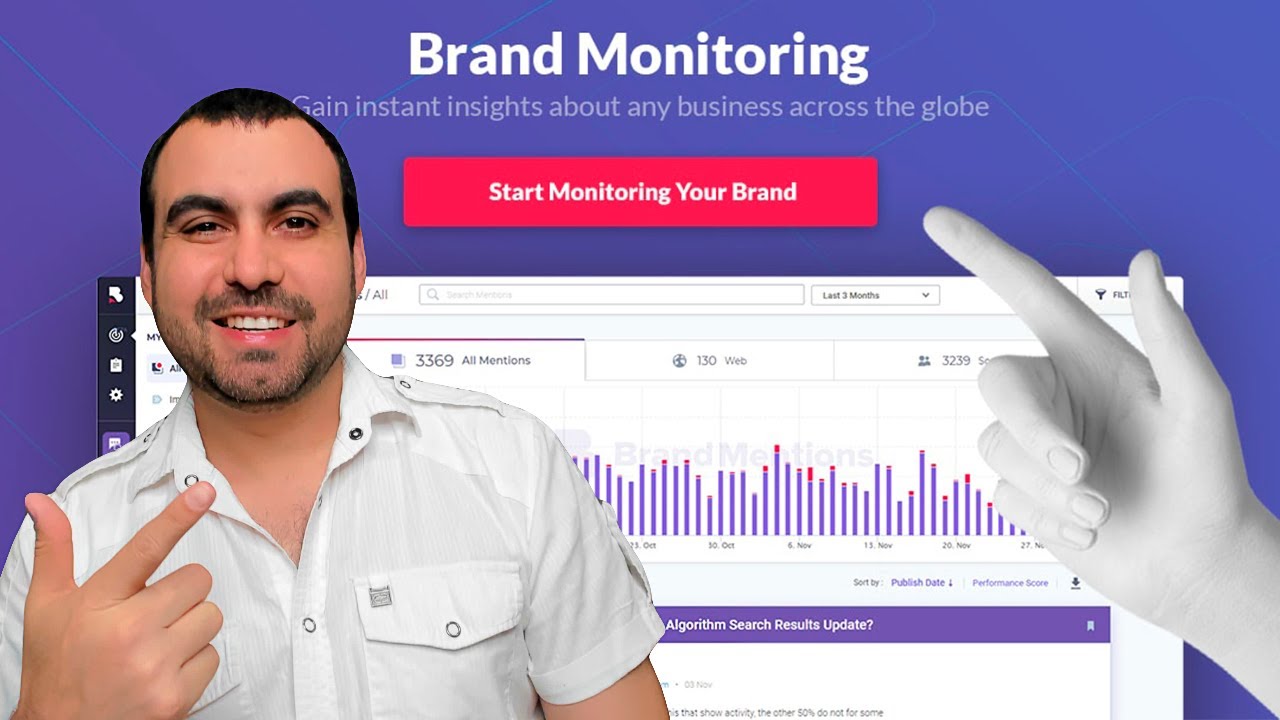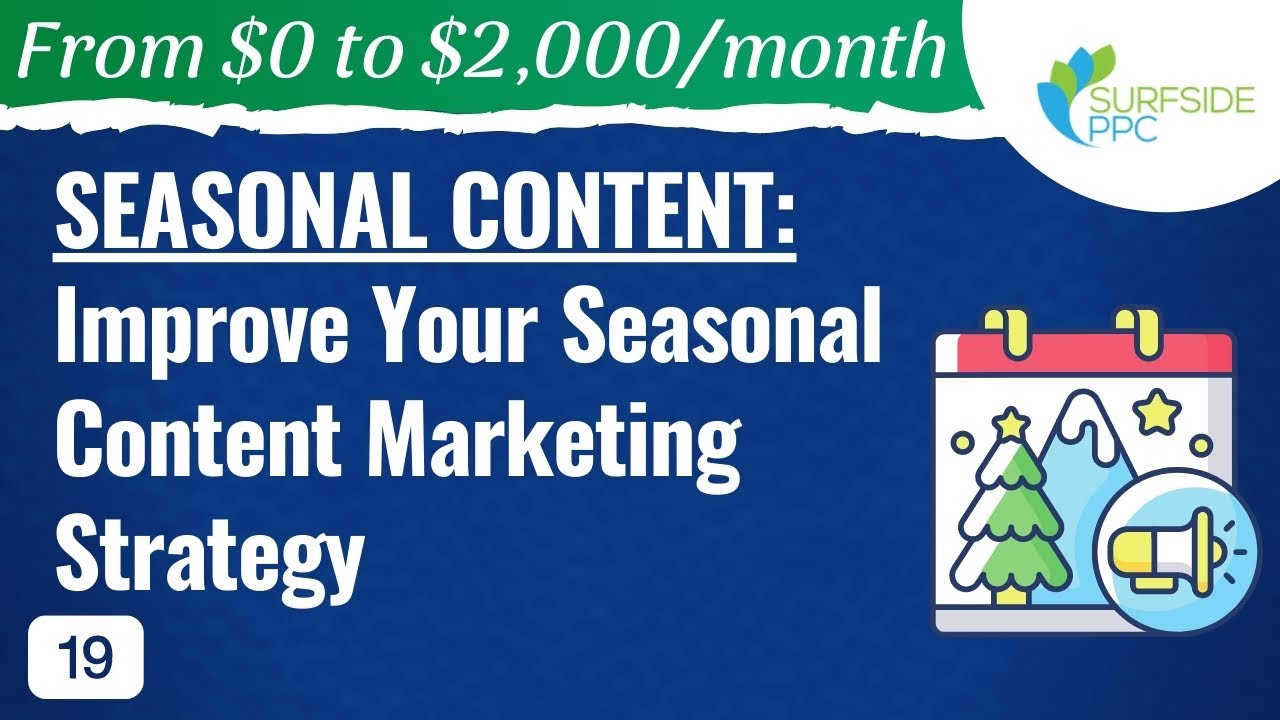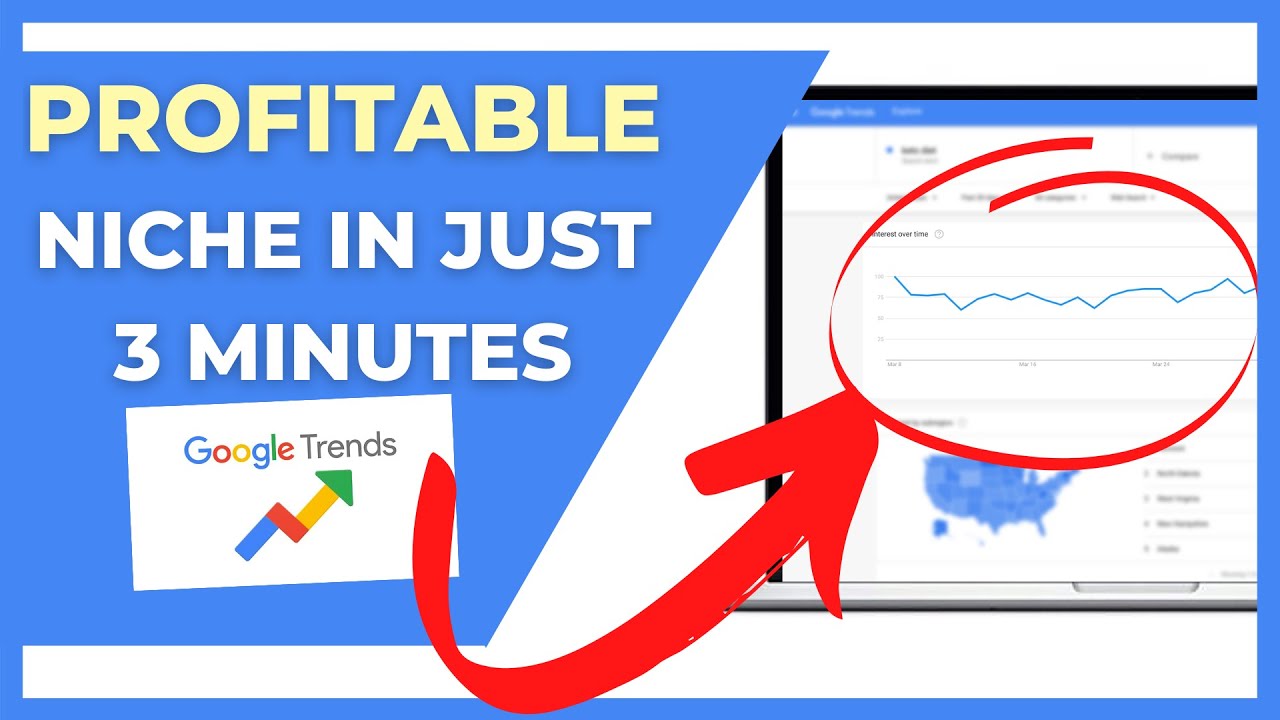In a world where the digital realm weaves a tapestry of interests and inquiries, understanding the pulse of global curiosity has become a paramount endeavor. In this digital age, where information flows ceaselessly and trends emerge and evolve at a rapid pace, one tool stands out as a beacon of insight - Google Trends.
Since its inception, Google Trends has served as a window into the collective mindset of billions of internet users, offering a unique perspective on the ebb and flow of interests, preferences, and societal shifts. In this article, we embark on a journey to unravel the power and potential of Google Trends, exploring how it empowers businesses, researchers, contentcreators, and individuals to harness the dynamic currents of digital curiosity.
Conduct Market Research
Market research is a cornerstone of informed decision-making in the businessworld. In the digital age, harnessing the power of online tools is essential for accurate and up-to-date insights. Google Trends, a versatile and intuitive tool, offers a wealth of information that can guide your market research efforts. Here's how you can effectively conduct market research using Google Trends:
Identifying Trending Products And Services
Discover the latest trends in your industry by examining the search volume of relevant keywords. Google Trends helps you understand what products or services are gaining popularity, allowing you to align your offerings with current consumer interests.
Analyzing Seasonal Demand
Uncover seasonal patterns in consumer behavior by exploring how search volume for specific keywords changes over time. This information is invaluable for businesses that need to adjust their marketing strategies and inventory levels according to seasonal demand fluctuations.
Understanding Regional Preferences
Use Google Trends to identify where your products or services are in demand geographically. This information helps you tailor your marketing efforts and distribution channels to specific regions, ensuring you're effectively reaching your target audience.
Tracking Competitor Performance
Gain insights into your competitors' online presence by comparing the search volume of their brand or products with your own. This helps you assess your market positioning and identify areas for improvement.
Validating Product Ideas
Before launching a new product or service, test its potential reception by analyzing related search terms in Google Trends. This can help you gauge whether there's a growing interest in the solution you're proposing.
Exploring Niche Markets
Identify emerging niche markets by tracking the rise in popularity of specific keywords or topics. Google Trends allows you to spot areas that might be underserved and capitalize on unique businessopportunities.
Informing Content Strategy
Tailor your content to align with trending topics and keywords. By integrating popular search terms into your content, you can improve your website's visibility and relevance, attracting more organic traffic.
Predicting Market Shifts
While not a crystal ball, Google Trends can provide insights into potential market shifts. By observing the trajectory of search term popularity, you can anticipate changes and adapt your strategies accordingly.
Testing Marketing Campaigns
Before launching a marketing campaign, use Google Trends to gauge the likely effectiveness of specific keywords. This can help you optimize your campaigns for maximum impact.
Tracking Consumer Sentiment
Monitor how the sentiment around your brand or industry changes over time. Google Trends can give you an idea of how positively or negatively your target audience perceives certain terms or concepts.
Discover Relevant Trending Topics

How to Find Trending Blog Topics With Google Trends
In an era defined by rapidly changing interests and digital engagement, staying attuned to trending topics is essential for effective communication and engagement. Google Trends, a dynamic tool that taps into the collective interests of users worldwide, offers a powerful means to discover and navigate the ever-shifting landscape of trending subjects. Here's how you can use Google Trends to unveil relevant trending topics:
Explore Rising Search Queries
Navigate to the Google Trends homepage and enter a broad keyword or topic that aligns with your interests or industry. Instantly, you'll gain access to a list of related rising search queries. These queries highlight topics that are currently experiencing an uptick in search activity, giving you a glimpse into emerging trends.
Utilize The "Explore" Feature
Google Trends' "Explore" feature allows you to delve deeper into specific topics. Enter a keyword or phrase, and you'll be presented with a comprehensive overview of its search interest over time, regional interest, related queries, and even related topics. This multifaceted approach helps you grasp the nuances and dimensions of trending subjects.
Monitor Real-Time Insights
Stay on the cutting edge by monitoring real-time insights. Google Trends provides up-to-the-minute data on what people are searching for right now. This feature enables you to capture trends as they unfold and swiftly adjust your content or strategies to match current interests.
Identify Seasonal Trends
Discover recurring patterns in search interest by using Google Trends to identify seasonal trends. This is particularly useful for tailoring your content or marketing efforts to align with specific times of the year, holidays, or eventsthat consistently capture public attention.
Compare Multiple Topics
Leverage Google Trends' comparison feature to analyze the popularity of multiple topics simultaneously. By contrasting different keywords or phrases, you can discern which subjects are gaining momentum and determine where to focus your efforts.
Gain Geographical Insights
Understand how trending topics vary across different regions. Google Trends provides geographic data, helping you tailor your content or campaigns to resonate with specific audiences based on their localized interests.
Discover Related Queries
Unearth interconnected themes by exploring related queries on Google Trends. These queries shed light on what users are searching for in conjunction with your chosen topic, enabling you to uncover tangential avenues for content creationor engagement.
Inform Content Creation
Craft compelling and relevant content by incorporating trending topics into your strategy. Whether it's blog posts, social mediaupdates, videos, or podcasts, aligning your content with current trends enhances your chances of capturing the attention of a wider audience.
Plan Marketing Campaigns
Optimize your marketing campaigns by integrating trending topics. Incorporate popular search terms into your advertisements, social media posts, or promotions to resonate with your target audience and enhance campaign effectiveness.
Stay Agile And Adaptive
Embrace the agile nature of Google Trends to remain adaptable. Trends can shift rapidly, so use this tool to pivot your strategies and stay in sync with the evolving interests of your audience.
Find Related Keywords

How To Use Google Trends For keyword Research (2024)
Keywords are the cornerstone of online discovery, shaping how content is found and consumed. Understanding the landscape of related keywords is crucial for effective content creation, search engine optimization(SEO), and digital marketing strategies. Enter Google Trends, a powerful tool that illuminates the intricate web of related keywords. Here's how you can use Google Trends to unveil a plethora of related keywords and enhance your online presence:
Begin With A Seed Keyword
Choose a seed keyword that represents your topic, product, or industry. Enter it into the Google Trends search bar to initiate your exploration.
Explore Related Queries
Once you've entered your seed keyword, scroll down to find the "Related queries" section. Here, Google Trends will present you with a list of queries that are related to your keyword. These related queries reflect the questions and terms people are searching for in conjunction with your chosen keyword.
Discover Rising Queries
Within the "Related queries" section, pay attention to "Rising" queries. These are keywords that are gaining significant traction recently. Incorporating these keywords into your content can help you capture current trends and improve your content's visibility.
Use Google Autocomplete
Combine Google Trends with Google's autocomplete feature. As you type your seed keyword into Google's search bar, it will provide suggestions for related searches. These suggestions are based on popular search queries, helping you uncover additional related keywords.
Analyze Related Topics
Below the "Related queries" section, explore the "Related Topics" segment. This section provides broader themes related to your keyword, offering insight into the overarching topics that people associate with your chosen term.
Leverage Long-Tail Keywords
Long-tail keywords are specific, longer phrases that cater to niche interests. Google Trends can help you discover these by analyzing the related queries section for longer and more specific search terms.
Refine Keyword Strategy
Use the insights from Google Trends to refine your keyword strategy. Incorporate relevant related keywords into your content, meta tags, and headings to improve the discoverability of your web pages.
Plan Content Creation
Unearth content ideas based on related keywords. Each related keyword represents a potential topic that resonates with your audience. Create content that addresses these topics to provide valuable information and boost your website's relevance.
Stay Current And Relevant
Regularly revisit Google Trends to stay up-to-date with changing search trends and related keywords. This continuous monitoring ensures that your content remains aligned with the evolving interests of your audience.
Monitor Brand Mentions

Elevate Your Digital Strategy: Discover the Power of BrandMentions for Brand Monitoring!
In a digital landscape bustling with conversations, monitoring brand mentions is paramount for maintaining a strong online reputation, understanding consumer sentiment, and making informed business decisions. Google Trends, a versatile tool at your disposal, can be a potent ally in tracking brand mentions and staying attuned to what the world is saying about your brand. Here's how you can effectively monitor brand mentions using Google Trends:
Establish Your Brand Keywords
Identify the primary keywords associated with your brand. These keywords can include your brand name, product name, slogans, or any other terms closely tied to your business identity.Enhance Your BrandingChatGPT
Elevating Your Brand

How to Elevate Your Branding + Create a Brand Guide (for Business Owners)
In a digital landscape teeming with voices, establishing a strong brand identity is essential for standing out and fostering meaningful connections with your audience. Google Trends, a dynamic tool that unveils shifts in search interest, can be a potent ally in enhancing your branding strategies. Here's how you can leverage Google Trends to elevate your brand:
Define Your Brand Identity
Start by clarifying your brand's core values, unique offerings, and target audience. A clear understanding of your brand identity serves as the foundation for effective brandingstrategies.
Identify Brand Keywords
Compile a list of keywords and phrases associated with your brand. These could include your brand name, product names, slogans, and terms that encapsulate your brand essence.
Monitor Competitor Branding
Use Google Trends to compare your brand's search interest with that of your competitors. Analyze how your brand fares in terms of online engagement and visibility.
Incorporate Trending Themes
Leverage trending topics and keywords to infuse relevance into your branding. Integrating these elements allows your brand to stay current and relatable.
Craft Timely Campaigns
Plan marketing campaigns that align with rising search interest related to your brand. Timely campaigns capitalize on current trends and maximize engagement.
Stay Authentic
While leveraging trends, ensure that your brand messaging remains authentic and aligned with your core values. Authenticity fosters trust and long-term connections.
Adapt And Iterate
Regularly analyze Google Trends data to adapt your branding strategies. Stay agile in responding to shifts in search interest and emerging trends.
Monitor Interest Over Time
Examine the "Interest over time" graph for your brand keywords. This graph showcases the search interest's fluctuations over a specified period. You can set the time range to track mentions in the recent past or extend it to analyze long-term trends.
Detect Spikes And Dips
Pay attention to significant spikes or dips in the search interest graph. These spikes may indicate periods when your brand garnered attention or faced a surge in online discussions. Dips, on the other hand, could signify a decline in interest or potential issues that need addressing.
Compare Brand Keywords
Utilize Google Trends' comparison feature to juxtapose multiple brand-related keywords. This can provide a holistic view of how different aspects of your brand are being mentioned and discussed online.
Explore Geographic Insights
Understand where your brand is generating the most interest geographically. Google Trends provides regional data, enabling you to pinpoint areas where your brand is resonating and areas that might require more attention.
Gauge Seasonal Trends
Analyze whether your brand mentions correlate with specific seasons or events. Seasonal trends can help you tailor your marketing and engagement strategies to align with peak interest periods.
Stay Informed About News Impact
Cross-reference significant brand mention spikes with major news or events related to your industry. This helps you gauge the impact of external factors on your brand's online presence.
Leverage Real-Time Insights
Stay current by utilizing Google Trends' real-time data. Monitor brand mentions and related discussions as they happen, enabling you to respond promptly to emerging conversations.
Adapt And Engage
Based on the insights you gather from Google Trends, adapt your strategies accordingly. Address negative sentiment, capitalize on positive trends, and engage with your audience in a manner that resonates with their current interests.
Analyze Competitor Performance

How To Conduct a Competitive Analysis (FREE Template)
In the ever-evolving digital marketplace, understanding your competitors is a crucial aspect of strategic decision-making. Google Trends, a versatile tool that illuminates shifts in search interest, can provide valuable insights into your competitors' performance and consumer engagement. Here's how you can effectively analyze competitor performance using Google Trends:
Identify Your Competitors
Pinpoint the main competitors in your industry or niche. These are the businesses or brands that share your target audience and offer similar products or services.
Gather Competitor Keywords
Compile a list of keywords associated with your competitors. These keywords could include their brand names, product names, unique offerings, or industry-specific terms.
Examine Search Interest Over Time
Explore the "Interest over time" graph that appears after you've entered your competitor keywords. This graph illustrates the search interest for these keywords over a specific period.
Compare Competitors
Utilize the comparison feature in Google Trends to visualize the search interest for multiple competitors on a single graph. This allows you to assess which competitor is gaining more attention and when.
Identify Peaks And Valleys
Look for significant spikes or drops in the search interest graph. Peaks could indicate moments of heightened attention due to marketing campaigns, product launches, or other events. Valleys might signify periods of reduced engagement.
Analyze Regional Interest
Explore the geographic distribution of search interest for your competitors. This insight helps you understand which regions are more receptive to each competitor's offerings.
Uncover Related Queries
Scroll down to the "Related queries" section. These queries reveal additional insights into what users are searching for in relation to your competitors. Analyze these queries to understand specific areas of interest.
Consider Seasonal Trends
Take note of any seasonal trends that might influence your competitors' performance. These trends can impact consumer engagement and highlight opportunities for strategic positioning.
Adapt Your Strategy
Based on the insights gathered from Google Trends, adapt your marketing, content, and engagement strategies. Learn from your competitors' successes and challenges to refine your approach and gain a competitive edge.
Keep Monitoring
Competitor analysis is an ongoing process. Continuously monitor their performance and search interest to identify emerging trends, shifts in consumer sentiment, and potential opportunities for collaboration or differentiation.
Discover New Content Ideation
In the realm of content creation, fresh and captivating ideas are the lifeblood of engagement. Google Trends, a dynamic tool that reveals the pulse of public interest, can serve as an endless source of inspiration for generating innovative content ideas. Here's how you can tap into Google Trends to spark your content ideation process:
Choose A Broad Topic
Select a broad topic that aligns with your industry, niche, or audience. This topic will serve as your starting point for exploring content ideas.
Enter The Topic In Google Trends
Navigate to Google Trends (https://trends.google.com/) and enter your chosen topic into the search bar. This will open a world of insights related to your topic.
Explore Rising Queries
Scroll down to the "Related queries" section. Focus on the queries that are currently on the rise. These queries represent emerging trends and interests that can inspire new content ideas.
Analyze Seasonal Trends
Observe any seasonal patterns in search interest related to your topic. Seasonal trends can guide your content creation strategy, ensuring your content remains relevant and timely.
Use The "Explore" Feature
Click on the "Explore" button next to your topic to dive deeper. This feature provides a comprehensive overview of search interest, related queries, and related topics, offering a wealth of creative avenues.
Discover Regional Insights
Understand how interest in your topic varies across different regions. Google Trends provides geographic data, helping you tailor your content to specific audiences.
Combine Related Keywords
Utilize the related keywords and queries you discover to create content that addresses various facets of your topic. Combining different keywords can lead to unique and multifaceted content pieces.
Address User Questions
Analyze the "Questions" section in the "Related queries" segment. These questions are often prompts for content that can provide valuable information and solve users' problems.
Explore Rising YouTube Searches
Switch to the "YouTube Search" tab within Google Trends. This reveals rising search terms on YouTube, helping you create video content that resonates with trending interests.
Stay Adaptable
Regularly visit Google Trends to stay current with emerging trends and interests. Be open to adjusting your content strategybased on new insights.
Innovate With Data Insights
Combine your industry knowledge with Google Trends data to create data-driven content. Interpret trends and present them in a way that adds value to your audience.
Seasonal Content Planning

Seasonal Content: Improve Your Seasonal Content Marketing Strategy - #19 - From $0 to $2K
Seasonal content plays a pivotal role in capturing audience attention, staying relevant, and maximizing engagement throughout the year. Google Trends, a dynamic tool that illuminates shifts in search interest, can be your guiding compass in creating a robust seasonal content plan. Here's how you can utilize Google Trends to craft an effective strategy for seasonal content:
Identify Key Seasons And Holidays
Identify the major seasons, holidays, and events relevant to your industry or niche. These will form the foundation of your seasonal content plan.
Research Seasonal Keywords
For each season or holiday, compile a list of relevant keywords and search terms. These could include product names, themed phrases, and terms associated with the season.
Explore Historical Data
Use the "Interest over time" graph to understand how search interest for your seasonal keywords fluctuates throughout the year. Identify when interest starts to rise and when it peaks.
Identify Rising Queries
In the "Related queries" section, look for queries that are currently rising in search interest. These queries represent emerging trends and can inspire fresh content ideas for the upcoming season.
Analyze Geographic Interest
Understand where the search interest for your seasonal keywords is highest. Google Trends provides regional data, enabling you to tailor your content to specific locations.
Plan Content Themes
Based on the insights gathered, plan out content themes for each season or holiday. Align these themes with the rising queries and emerging trends to ensure relevance.
Incorporate Visual Content
Switch to the "Image Search" tab within Google Trends. This reveals trending images related to your seasonal keywords, offering inspiration for visual content.
Integrate Relevant Products Or Services
If you have products or services that are particularly relevant to certain seasons, incorporate them into your content plan. Highlight how they solve seasonal needs or enhance experiences.
Monitor In Real Time
Throughout the season, keep a close eye on real-time search interest using Google Trends. This allows you to make timely adjustments to your content strategy based on emerging trends.
Reflect And Prepare
After the season has passed, review the performance of your seasonal content. Identify what worked well and what could be improved to refine your approach for the next cycle.
Stay Ahead Of The Curve
Use the insights gained from Google Trends to start planning for upcoming seasons well in advance. Staying ahead of the curve ensures that you have ample time to create high-quality content that resonates.
Identifying Long-Term Trends

How to Use Google TRENDS To Find a Profitable NICHE (in Only 3 MINUTES!)
In the vast expanse of data and information, identifying long-term trends is akin to deciphering the underlying currents that shape our digital landscape. Google Trends, a powerful tool that unveils search interest patterns, can be your compass in unraveling these enduring trends. Here's how you can leverage Google Trends to identify and understand long-term trends:
Choose A Relevant Topic
Select a topic or keyword that resonates with your industry, niche, or area of interest. This topic will be the lens through which you explore long-term trends.
Examine Interest Over Time
Explore the "Interest over time" graph displayed for your chosen topic. This graph provides an overview of how search interest has evolved over an extended period.
Set A Meaningful Time Range
Adjust the time range on the graph to span several years or even a decade, depending on the availability of data for your chosen topic.
Observe Peaks And Valleys
Identify notable peaks and valleys in the search interest graph. Peaks represent periods of heightened interest, while valleys indicate times of lower engagement.
Cross-Reference Events
Correlate the peaks and valleys with significant events, developments, or industry milestones. This will help you contextualize the trends and understand their driving forces.
Analyze Seasonal Patterns
While focusing on long-term trends, also be attentive to recurring seasonal patterns that may influence search interest. These patterns can provide a comprehensive view of trends over time.
Explore Related Topics
Scroll down to the "Related topics" section. This segment showcases overarching themes and topics related to your chosen keyword, offering deeper insights into the broader context.
Consider Industry Evolution
Factor in the evolution of your industry or niche over the years. As your field transforms, search interest patterns may reflect changing technologies, consumer preferences, or market dynamics.
Anticipate Future Trajectories
Based on your analysis of long-term trends, make informed predictions about the future trajectory of your chosen topic. Consider how historical data can inform your strategies moving forward.
Inform Decision-Making
Utilize your insights to inform business decisions, content strategies, and long-term planning. Understanding enduring trends equips you with a strategic advantage in a rapidly changing digital landscape.
Continuously Monitor
While focusing on long-term trends, continue to monitor real-time data through Google Trends. This ensures that you remain agile and responsive to emerging shifts.
Geo-targeting Insights
In the era of global connectivity, understanding the geographic preferences of your audience is crucial for targeted marketing and engagement strategies. Google Trends, a dynamic tool that unveils shifts in search interest, can provide valuable geo-targeting insights to enhance your reach and resonance. Here's how you can harness Google Trends to navigate geographic relevance effectively:
Define Your Target Regions
Identify the geographic regions that are most relevant to your business or campaign. These could be countries, states, cities, or even specific localities.
Compile Geo-targeted Keywords
Compile a list of keywords and phrases that reflect the preferences and interests of your target regions. These keywords should align with the local language and search behavior.
Examine Regional Interest
Explore the "Interest by region" section of Google Trends. This feature displays a heatmap illustrating where search interest for your keywords is highest.
Identify Top Regions
Identify the regions where search interest for your keywords is the highest. These regions represent your primary target areas for engagement.
Analyze Trends By Region
Examine how search interest trends vary across different regions. Understand whether certain topics or products resonate more strongly in specific locations.
Tailor Content And Campaigns
Craft content and marketing campaigns that are tailored to the preferences of each target region. This customization enhances relevance and engagement.
Consider Local Events
Factor in local events, holidays, and cultural nuances that might influence search behavior in specific regions. Align your strategies with these context-specific factors.
Monitor Real-Time Engagement
Continuously monitor real-time search interest in your target regions. Stay agile in adjusting your strategies to capitalize on emerging trends and interests.
Compare Regions
Use the comparison feature in Google Trends to analyze the search interest for your keywords across different regions. Identify regional variations and adjust your strategies accordingly.
Optimize Local SEO
Implement local SEOstrategies to ensure your business appears in location-based search results. This enhances your visibility among local audiences.
People Also Ask
What Is The Significance Of Google Trends?
Google Trends is a powerful tool that allows users to analyze and visualize the popularity of search terms over time and in different geographic locations. It offers valuable insights into shifting interests, emerging trends, and public sentiment, making it a crucial resource for businesses, researchers, journalists, and anyone seeking to understand the ever-changing digital landscape.
How Frequently Is Google Trends Data Updated?
Google Trends provides near real-time data updates. The tool is designed to offer the latest insights into search term popularity, allowing users to monitor trends as they unfold and make timely decisions based on the most current information available.
Can Google Trends Predict Future Trends?
While Google Trends can provide valuable insights into emerging topics and shifts in interest, it's important to note that the tool itself doesn't predict future trends. However, by analyzing historical data and observing patterns, users can make informed assumptions and predictions about potential future trends based on the observed trajectory of search term popularity.
How Can Marketers Use Google Trends To Their Advantage?
Marketers can leverage Google Trends to refine their content and advertising strategies. By identifying popular search terms and monitoring trends, marketers can tailor their campaigns to align with current interests, optimize keyword usage, and create content that resonates with their target audience, ultimately driving better engagement and results.
Is There A Cost To Using Google Trends?
No, Google Trends is a free tool provided by Google. Users can access and utilize its features without any cost. Whether you're an individual looking to explore trends or a business seeking market insights, Google Trends offers a wealth of information without requiring a financial investment.
Conclusion
In a world inundated with data and digital footprints, Google Trends emerges as a guiding compass, aiding us in navigating the expansive seas of digital inquiry. The trends we uncover reflect not only the topics that pique our collective interest but also the stories, concerns, and aspirations of humanity. Google Trends is a digital mirror reflecting the ever-evolving tapestry of our culture, a testament to the perpetual quest for knowledge and connection.
So, whether you're a marketer seeking consumer insights, a researcher tracing social dynamics, or simply a curious soul eager to understand the world, Google Trends beckons - an invitation to dive into the depths of digital curiosity and emerge with a richer understanding of our interconnected world.